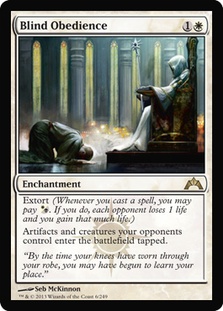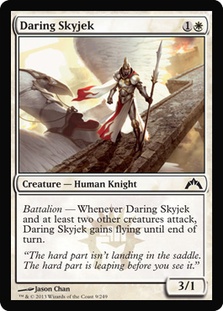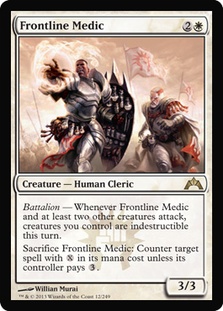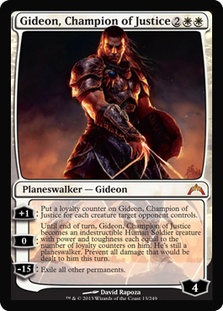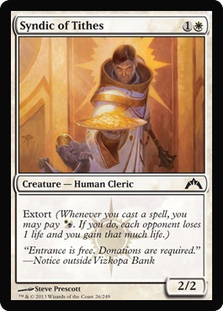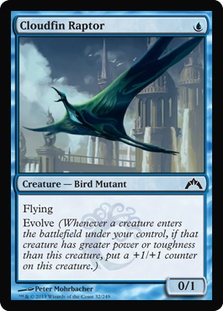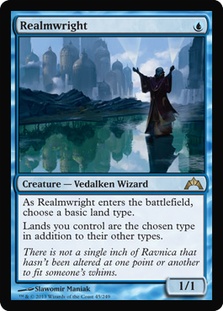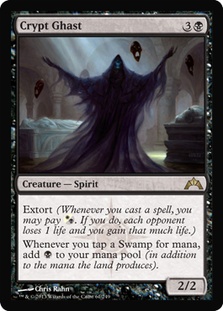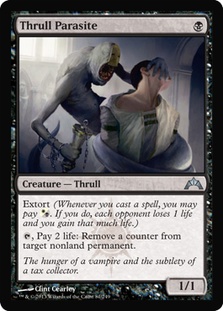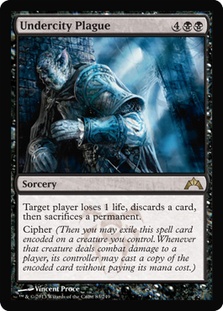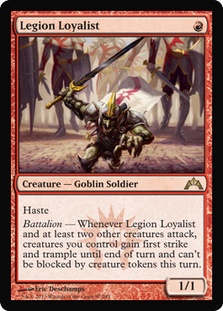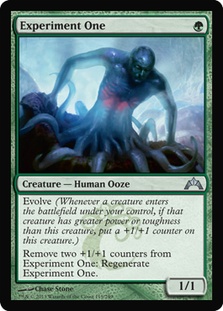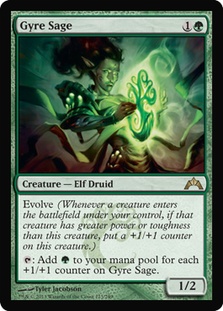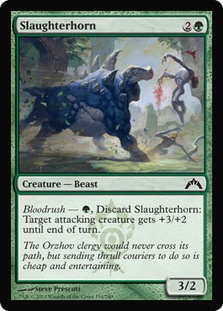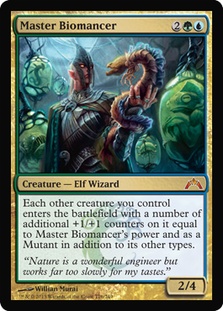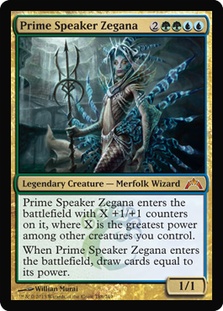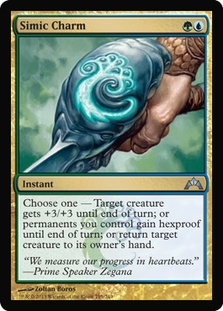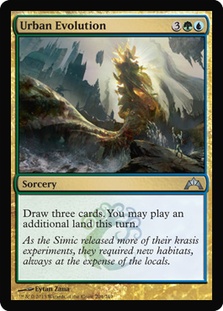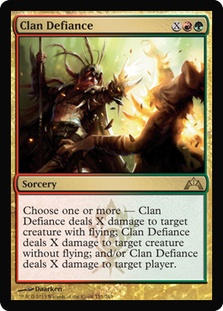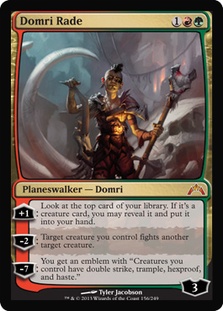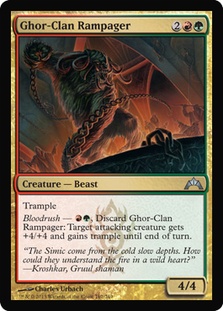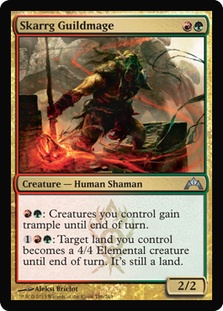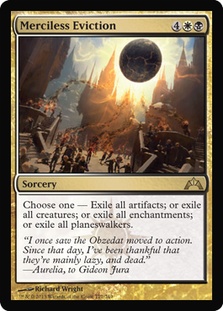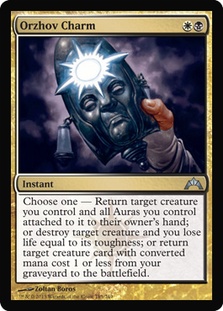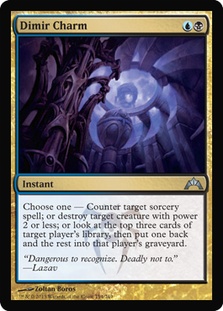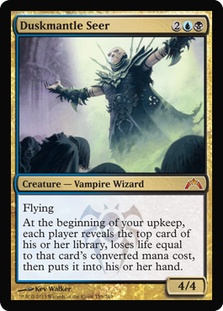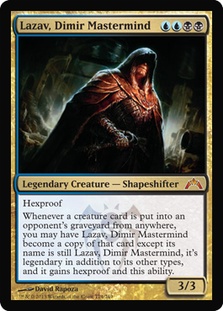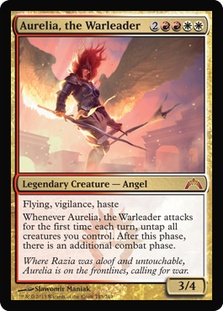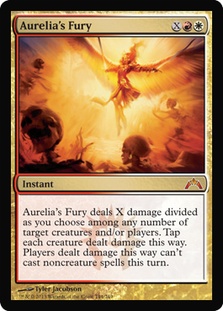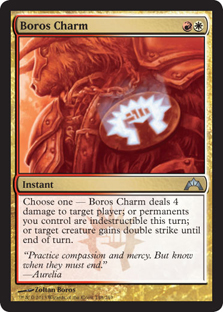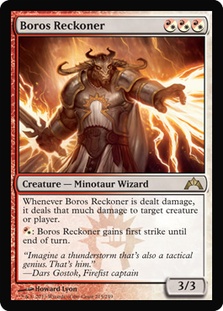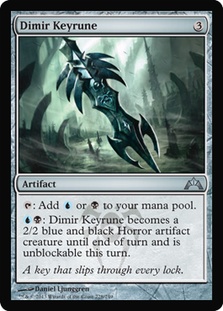Gatecrash is upon us, and with it are new cards for our cubes. Unfortunately, we aren’t getting anywhere near the number of cards we did from Return to Ravnica. I’ve got about 20 cards from RTR compared to nine cards from GTC that I’m considering for my cube, some of which won’t survive.
Still, we’ve got some interesting cards for our cubes and nice tools to work with from the new set.
White
Blind Obedience – We’ll start with a card that seems…not bad overall. Its main use will likely be as an anti-control and anti-midrange tool to stop those decks from being reliant on using mana rocks and big finishers to help you stabilize (Gilded Lotus is much worse when you can’t tap it for a three-mana spell like a Man-o’-War after being cast). But it takes the slot of a threat, which can make it awkward for aggressive decks since noncreature slots can be a tight fit for aggro decks as they tend to pack things like removal/equipment. It may be best in slower decks that can aim for the long game that can utilize the kicker cost and can more easily afford to pay the extort cost.
Daring Skyjek – It’s an obvious upgrade to Blade of the Sixth Pride (which I’m happy to see being possibly the "gold standard" for white creatures despite being printed as a "future" card), but not many cubes are running that card anyway. Many are running ones like Porcelain Legionnaire and Accorder Paladin though.
It isn’t super exciting, but at the end of the day, it still beats three for two mana, even if it dies to just about everything. Battalion is mostly gravy on cards, so I wouldn’t consider this to be a 3/1 flier by any means, but it’s not bad as an easy-to-cast creature. I’d count it more as filler than anything.
Frontline Medic – Meh. Actually not a bad body and the ability to go indestructible is nice, but as said earlier, its ability to go into battalion mode is mostly secondary (and its X mode is mostly…tertiary?). Generally, three-mana cards lag behind ones at two mana and four mana, and there are some good three-mana white creatures. But they’re nowhere as stacked as the ones at two or the legendary competition at four; even still, it’ll be hard for it to crack into most cubes.
Gideon, Champion of Justice – Gideon is a card that should be compared not to other planeswalkers or even Gideon Jura but to other four-drop beaters like Calciderm. In fact, I think Calciderm is a pretty close analogy since they’re both essentially big beaters, with new Gideon usually attacking for five since it pluses after its cast and usually just starts attacking. Unfortunately, since it gets smaller if attacked, it can be awkward in race scenarios when the opponent can attack it. Generally, it’s at its best when it’s acting like a one-sided Abyss. It isn’t hard for it to become a 6/6, which kills a majority of creatures in a fight.
It may be a cliche to bring up, but in many cubes, the competition for white four-drops is insane; even ones that are considered to be on the lower end like Parallax Wave, Kor Sanctifiers, and Sublime Archangel are much better four-drops than the new Gideon, which will keep it out of small to midsized cubes. It may be possible to fit it into larger cubes with room for more white fours, but it’s hard to say just how far you need to go to allow it in.
Syndic of Tithes – Syndic does its job in the early game (which for aggro decks is beating for two) while having some late-game utility a la Eight-and-a-Half Tails and Ember Hauler. Unlike the latter two, it requires a few spells and suffers from the "when it’s good, it’s good, but when you’re just topdecking lands, it’s one of the worst two-drops that you can have" scenario. In testing, I found that it generally dealt between one and three damage. There is a tension between wanting to maximize your early mana effects, curving your mana drops, and extort. Much like the Guildgates in Standard R/B Aggro that can help you to get value out of curving out behind the curve, which is nice for when you’re maxing out on early drops.
We’re getting to the point where we have more leeway in terms of what two-drops we can include in cubes. When Shards of Alara came out, Knight of the White Orchid was an easy include, whereas nowadays it’s hard to find it in cubes because we’ve gotten so many options lately like Cloistered Youth and Knight of Glory in recent sets. It’s nice to have Syndic as an option for white two-drops because having tools to play with are nice to have for cubes to be able to tinker with the archetypes for support.
Blue
Cloudfin Raptor – I’ve been a fan of supporting blue aggro/tempo strategies even though I don’t support them as hard as I can in my cube, as it gives blue some other angles and helps cards like Timetwister, Opposition, and Kira, Great Glass-Spinner (which are fine outside of aggro as well). Unfortunately, I’m not really a fan of the Raptor because it requires too much input to be any good. As lazy as the comparison may be, when compared with Experiment One, E1 only requires one creature to be good while Cloudfin Raptor requires two (a 1/2 flyer for U, while it can carry equipment like a champ, isn’t doing much, while a 2/2 ground pounder will) creatures to do so. Getting the first counter on it isn’t terribly difficult, but requiring another creature to make it solid diminishes it a lot.
Realmwright – I feel like its ability to mana fix a la Urborg, Tomb of Yawgmoth to help 2+ color decks is helpful and that that particular part of it is underrated, but it still does cost a slot in your cube in your cube blue section, which is what’ll keep it rightfully out of many cubes.
Black
Crypt Ghast – The big extorting ghost is similar to a black Oracle of Mul Daya with a better potential upside by being able to power out insane plays like Myr Battlesphere / Sundering Titan / Griselbrand on turn 5, but it also has a bigger downside by providing little value if it dies quickly and doesn’t have the best body in the world. I think that, like Liliana of the Dark Realms, people will think of it mostly in terms of mono-black, but both cards are fine in base-black decks, and it will work well in black control decks, especially since those decks can easily abuse extort and can live long enough to make extort take a sizable chunk out of the opponent’s life total (especially if they’re to give you value out of mana rocks like Signets).
Thrull Parasite – As much as I love black aggro, Thrull Parasite isn’t what you want for those decks. Sadly, its body is too small to be relevant. Its extort helps it become relevant in the late game, but like Syndic of Tithes and Crypt Ghast, the extort needs to be an added bonus, which isn’t the case for Thrull Parasite. Much like Hex Parasite, it seems like its ability to hose planeswalkers won’t perform that task particularly well either.
Undercity Plague – The mini Smallpox is a mono-colored cipher spell with the potential to be very good since it can keep an opponent who is unable to block the ciphered creature is down two lands, cards, and life. It can turn an evasive guy into a real saboteur, as we’ve found that non-evasive saboteurs like Dimir Cutpurse to be pretty bad. Undercity Plague looks like it requires too much reliance on being able to get in with the ciphered creature, and even if it does, something like the cipher Clone (Stolen Identity) seems like the better six-mana spell, although to be fair, blue’s competition is much, much steeper.
Red
Legion Loyalist – Much like how I see cards like Hellspark Elemental and Keldon Marauders as burn spells, I tend to see Legion Loyalist more as an enchantment that works with 2+ guys rather than a creature. But even then, it didn’t work that well in testing, even with the hasty Goblin in the opening hand. Even if it was battalioning it up in the red zone, it usually was either ignored if it wasn’t a threat or suicided into bigger things if it wasn’t. Much like the "small guys can’t block when this attacks" ability on Hero of Oxid Ridge was a nice bit of upside, so is the token evading ability on Legion Loyalist, but it’s mostly just gravy. Overall, I’m not really a fan, which is sad since it seems like one of the better red cards from the set.
Green
Experiment One – When Experiment One was initially spoiled, I immediately knew that I wanted it in my cube because I support green aggro. I ran some simulations and found that it wasn’t terribly difficult to get to two power in a green aggro deck (and make no mistake, even though it works well with big green guys, it’s an aggro guy, not a midrange one)—it wasn’t terribly hard to get it to be a 3/3 in a generic aggro deck like Gruul or Golgari. Its placement in your cube depends mostly on whether you support green aggro (easy in) or not (easy exclusion).
Gyre Sage – It may be better to think in terms of Gyre Sage not as a ramp guy but more as a beater a la Erg Raiders (like how Experiment One is considered to be essentially like an Isamaru) with some upside rather than a mana producer since it is pretty inconsistent at doing so. Mike Flores hinted at it when he compared it to Quirion Dryad in his preview article, so its role may be best as a 2/3 attacker for 1G. It isn’t too bad for green beatdown decks, but it certainly wouldn’t be out of place in a green midrange deck full of Beast tokens, Baloths and Titans.
If used in green aggressive decks, its mana production is mostly gravy, but it’s a bonus by being able to power out things like Sword + equip on an attacker. While Experiment One’s inclusion is wholly dependent on whether or not you support green aggro in your cube, Gyre Sage’s role is a bit more gray as it fits into both strategies, although it isn’t really specialized for either. I don’t think that I have room for it myself though.
Slaughterhorn – Slaughterhorn looks to be one of the better bloodrush guys, mainly thanks to its very cheap bloodrush cost. It could be like Burst Lightning or Izzet Charm / Simic Charm where both of its costs are under the overall curve but the overall package is worth it since the base effects are fine to have and they allow you to have spell effects while maintaining a threat density in your aggro deck.
A 3/2 for three isn’t knocking anyone out and it can be easy to say, "Well, no one plays Nessian Courser or Giant Growth and this is worse than both," but that ignores the flexibility of its overall effect. Cards like Burst Lightning and Kargan Dragonlord look terrible when isolating the individual modes ("Why would I play a harder-to-cast Grizzly Bears or a RRRRRR 4/4 Dragon?"), but it may be that Slaughterhorn’s abilities help to make its sum better than its parts.
To be fair, casting Slaughterhorn robs all of its flexibility because it makes it so that it’s set as a 3/2. Its body isn’t quite as useful as Skinbrand Goblin’s Goblin Piker ability since that tends to align more with aggressive decks, but it’s better pump should fit the overall better. (I also wonder if Wrecking Ogre’s ability to close games out of nowhere makes it cube-worthy; my initial impression is that it’s better than most people think, but even with the anemic five-drop slot in red, I don’t think that I have room for it in my cube.)
Sylvan Primordial – Oh, how I wish that it costed six! It’s nice that it’s a decently sized big creature that doesn’t cost eight mana (we have plenty of mana ramp targets at eight with Primus, Craterhoof Behemoth, and Terastodon) and it’s nice that it hits planeswalkers, especially since the ones at six mana have pretty bad bodies at 3/3, but the overall impact seems a bit too low compared to other big mana effects. But it is a nice tool if you feel like you need more tools to deal with planeswalkers and other such things. Its ramp ability isn’t that great either, but hey, free Forest.
All in all, mono-color cards didn’t really impact the format much, but it’s fair to expect that from a multicolor set.
Simic
Master Biomancer – I think that the right way to think of Master Biomancer is like a variant on an Anthem effect, which isn’t very good. Unfortunately, Master Biomancer requires to be cast before other creatures come into play and gives some nice value with one creature cast after it (four power, two of which stay even if he dies), but he can become pretty absurd if you have any kind of token generators. His body, while not amazing by any stretch, isn’t embarrassing either as a four-mana 2/4 to block ground pounders.
It can be nice to assist other creatures like mana producers, which can be pretty awkward to topdeck in the late game, by turning mana elves into 3/3s and spell creatures like Aether Adept into monsters. Unlike an Anthem, you can’t slam it onto the table and change the tide of battle, but it can change the tide of future battles. However, it’s a bit too variant power level wise for me, which is why I don’t have room for it in my cube.
Prime Speaker Zegana – Speaking of variant power level, Prime Speaker Zegana’s power level can be wildly variant depending on the board state. One thing that Elesh Norn and Massacre Wurm taught me and many other cubers is just how often random 1/1s and 2/2s are on the board, even during the later stages of the game.
It isn’t uncommon to find yourself on turn 6-8 in a green/blue deck with some 2/2s like Aether Adept / Viridian Shaman / Snapcaster Mage hanging around after they did their thing or some 3/3 Beasts that a Garruk made, and I find that Simic decks tend to have a lot of those creatures. Prime Speaker can help to refuel your hand while providing a huge creature. In testing, it’s been overall solid but pretty variant power level wise, and at least in my cube with four multicolor slots, Prime Speaker barely misses the mark for me.
Simic Charm – I was initially pretty bearish on Simic Charm, but when I read Cedric’s recent article on underrated Gatecrash cards, I realized that it’s similar to another much-loved Charm: Izzet Charm. Both cards combine three one-mana abilities into a nice overall package (Mizzium Skin, Unsummon, Giant Growth), which are all nice abilities that work well with Simic’s goals—similarly to how all of Izzet Charm’s abilities work well with what the deck wants to do—by creating tempo via either bouncing the opponent’s threats, protecting your own with cheap counters, or out-muscling theirs.
Obviously, it isn’t as strong as Izzet Charm since its individual modes aren’t as strong as Izzet Charm’s (Shock / Spell Pierce / Careful Study, for the most part, > Unsummon / Giant Growth / Mizzium Skin), but the parts work together well enough that it should be a solid contender for Simic sections.
Pre-Gatecrash, there was a pretty strong four-card set that could be tailored for the Simic section in cubes: Edric, Spymaster of Trest, Simic Sky Swallower, Mystic Snake, and Shardless Agent. It’s hard to say whether one of those could be cut for Simic Charm (I’m considering cutting Mystic Snake or Shardless Agent for it) in my cube. In cubes using four multicolor cards, it’s a harder sell, but it’s an easy in for sections with 5+ cards.
That and it’s the frog-bee’s knees.*
Urban Evolution – Urban Evolution feels like its sum is greater than its parts (and that may be the theme of this set overall, whereas Return to Ravnica had a lot of really solid role-players), but it just feels too clunky as a draw 3 because both colors tend to have better things to do at five mana like casting 4/4s with upside or planeswalkers to take over the game. Drawing three cards, even with an extra land drop, doesn’t seem to do enough for the cost.
Gruul
Clan Defiance – It compares somewhat favorably to something like Profane Command since it usually will deal X damage to a player and a creature with the possibility for a three-for-one blowout, but that just seems like gravy as the effect seems clunky for the cost. It’ll be at home in more Gruul Midrange decks, but there are better cards for that. Like…
Domri Rade – Since it was "spoiled" months ago, I’ve been trying it to see how it is. It’s better than you’d think, but mostly for midrange Gruul or Naya decks with a lot of dudes like Naya Midrange that have a lot of creatures that act like spells—creatures like Flametongue Kavu, Master of the Wild Hunt, and Kor Sanctifiers. Even if its +1 ability doesn’t necessarily net direct card advantage guaranteed, it helps you set up fights to help control the battlefield and occasionally gets a creature or two for your trouble to help set up fights.
I’ve heard comparisons saying that it’s like a three-mana Ulvenwald Tracker, but that seems pretty disingenuous, like calling Liliana of the Veil a three-mana Cruel Edict or Ajani Vengeant a four-mana Lightning Helix.
I’ve also heard people say that it sucks in aggro, but Domri isn’t an aggro card. That said, Domri Rade is on the cusp of inclusion in my four-card Gruul section, and I don’t presently have room for it since the color combination is pretty stacked with efficient creatures like Bloodbraid Elf and Huntmaster of the Fells.
Ghor-Clan Rampager – Ghor-Clan Rampager is the best bloodrush creature because its body is solid as is the growth ability, and both modes work very well synergistically, especially the trample on the bloodrush since it works well as a pump spell that can be cast as a 4/4 trampler if need be. Like with Domri Rade, its inclusion depends on competition, but it also is dependent on if you follow the literal categorization multicolor method (Kird Ape is counted as red instead of Gruul) or if your cube is using the functional method (Kird Ape is counted as Gruul). It also may depend if you’re moving your R/G section away from aggro, as cards like Kird Ape and Flinthoof Boar don’t have a home in those sections, since Ghor-Clan Rampager likely wouldn’t have a home in those sections either.
Skarrg Guildmage – Much like what will happen with Sunhome Guildmage, it’s a solid card that provides reach on a cheap body since it turns your lands into non-flying Hell’s Thunders, which isn’t bad, especially when it can be used multiple times. The trample ability can make for some awkward blocking positions for the opponent, but the strong competition from cards like Ghor-Clan Rampager and Domri are going to leave the Guildmage out of many cubes.
Orzhov
Alms Beast – Alms Beast was spoiled pretty early, and the drawback isn’t as bad as you’d think, especially considering that most creatures can’t survive a fight with a 6/6 (especially if it comes out on turn 4). It does make for bad racing situations and can conflict with a B/W aggro deck’s goals, especially if the opponent has a token generator like a Garruk, so its role may be just as a generic control beater that doesn’t care about the opponent’s life total. That said, it’s going to be the competition (mainly from Obzedat in smaller cubes) that keeps Alms Beast out of cubes, mine included.
Merciless Eviction – Unless a six-mana Wrath has "Catastrophe" in its name, I’m not interested in it for cube, and doubly so if it’s multicolor. Like Austere Command, it can be pinpointed to take advantage of the board state and can be used as planeswalker destruction, but the overall effect is overall too weak. I frequently found Austere Command to destroy all creatures (earning it the nickname of "Awkward Command") at too high of a cost, with the extra mana not being worth it, and Merciless Eviction will likely follow that same pattern.
Obzedat, Ghost Council – Out of all of the guild leaders that were printed in this block, Obzedat is the one that seems the most pushed and one that I am the biggest fan of, and not just because the title sounds like the album Obzen by Meshuggah. Like all of the guild leaders, it has an awkward cost, but once resolved it is able to close out games easily.
Its ability to drain the opponent for two works incredibly well with the life loss in black aggro as well as helping decks like Esper stabilize. Obzedat played a lot like what I wanted Sorin Markov to be, a finisher that provides inevitability, but with a five-power body to clock the opponent with. Its ability to Flicker itself out has also been incredibly versatile as a way to adapt to the board state by helping it break through ground stalls, and the typical mode that I did with it was to Flicker itself out at EOT.
It blanks so much removal in cube. I had a conversation with someone about instant speed removal and how ones like Path and Swords kill Obzedat. But what else does? Not much.
Instant speed removal that kills it:
Terminate, Path to Exile, Swords to Plowshares, Go for the Throat, Nevinyrral’s Disk, Aurelia’s Fury, Diabolic Edict
Neutralizes it:
Parallax Wave, bounce effects like Cryptic Command, tap effects like Icy Manipulator/Ring of Gix
Conditionally kills it/requires help:
Tragic Slip or Brimstone Volley (with morbid), Cloudthresher (in combat), Ulvenwald Tracker + a creature big enough to kill it, Sneak Attack / Teferi, Mage of Zhalfir / Mimic Vat with a 187 dude or big enough to kill it in combat, multiple burn spells (Lightning Bolt + Incinerate) or an instant speed Bonfire of the Damned / Terminus
I’m sure that I’m missing a few that aren’t played in as many cubes like Putrefy, Mortify, and Beast Within, but that’s pretty much it. A good chunk of the removal in cube is sorcery speed, and I’ve seen it completely invalidate a blue deck holding Control Magic effects. Even in decks like Esper Control, I’ve seen and heard from friends reports of how it closes out games by bleeding the opponent out two life at a time. Its casting cost isn’t that bad either in my experience, even in the aggro decks, since you’re casting it on turn 5 or 6 anyway, and decks like Esper Control don’t have a very hard time with its cost. All in all, I’m a big fan.
There’s a very solid trio of Orzhov cards with Vindicate, Lingering Souls, and Sorin, Lord of Innistrad, and Obzedat is a solid #4 in that ranking. Cubes using the literal method will find it much easier to fit Obzedat in since cards like Lingering Souls and Desolation Angel aren’t competition under that system.
Orzhov Charm – Unfortunately, I’m not as much a fan of Orzhov Charm. It has one of the stronger modes with its Devour in Shadow mode, but its other Rescue and pseudo Unearth modes are too weak to push it over mediocre status. It’s nice that it can kill any creature (like Obzedat), but the overall cost in terms of life and mana are too high.
Dimir
Dimir Charm – Much like Izzet Charm and Simic Charm, it’s a nice spell that fits well with what the color pair wants to do: kill cheap dudes, manipulate your library, and counter any big game sorceries like Upheaval that could break the game, Each mode helps up to make up for the situational parts of the others. The two-power mode kills a surprisingly high number of non-aggro creatures in cube, and the sorcery countering is a nice little bonus—Envelop is abysmal for cube, but having a mode that does that on top of doing other things is nice value.
Dimir Charm’s place in your cube may depend on the size of your cube and whether you support themes like artifact or tempo decks (although I’m typically happy to include Tezzeret, Agent of Bolas in any blue deck that has enough artifacts and mana rocks).
Duskmantle Seer – At first, I thought that Duskmantle Seer was abysmal. "Nice Bob, but the opponent gets cards too? No." It wasn’t until I thought about other symmetrical cards like Wheel of Fortune that I gave Duskmantle Seer another chance. I’ve had a lot of success with Wheel of Fortune in my aggro decks, but even still, people underrate it because they fear the symmetrical effect and still tend to overly fear drawbacks, especially symmetrical ones.
It probably won’t be as good in cubes that don’t support blue tempo decks (and cards like Dimir Charm and Lazav, Dimir Mastermind may be more at home over Duskmantle Seer), but in those decks, Duskmantle Seer is an all-star. Its drawback will feel closer to a Sulfuric Vortex because of the overall damage output since you’ll be able to use the cards to either cheaply counter opposing threats or more quickly convert them to damage, so I’m happy to include it in my cube.
Lazav, Dimir Mastermind – Like with Obzedat, its mana cost can be awkward, but by that turn, it isn’t as hard to cast as you’d think. Hexproof, as people are finding in Standard, can be an incredibly annoying ability, and it can make the opponent’s discard incredibly awkward since people tend to discard their more expensive creatures when they’re hit with chosen discard. Usually, the Shapeshifter ability is relevant since a majority of Cube decks rely on creatures to win, even if they are enough to count on one hand. In that case, those decks tend to run the juiciest targets like Titans and other giant robots. Unfortunately, Lazav doesn’t clone the ETB triggers, but it’s still solid as is. It may be difficult to fit into smaller Dimir sections though.
Boros
Aurelia, the Warleader – Like with Domri Rade, it was "spoiled" early through leaks and went very well in testing. Although the 3/4 flying, haste, and vigilant body brings forth comparisons to Lightning Angel, it performed like a Rorix much more than Lightning Angel and could create some blowouts from nowhere, especially if the opponent had insufficient defenses to deal with the incoming horde.
It also may be easier for her to attack twice since some cubes are shifting away from using the Kamigawa dragons like Yosei and Kokusho like the Magic Online Cube (when it went down to 540 cards in the Holiday update, although it’s going back to 720 on January 30th to the same configuration that it was during the Community Cup); attacking with her and her friends for 12+ damage was pretty common. She was absurd if other creatures had tap abilities because combining her with cards like Master of the Wild Hunt, Kiki-Jiki Mirror Breaker, or Cloudgoat Ranger is pretty absurd. Sadly, she will likely get edged out in smaller cubes due to the increased competition from cards like her Fury and Boros Charm.
Aurelia’s Fury – Cards like X-spells and flexible spells generally tend to get underrated, especially in a format like Cube where it’s in direct comparison to cards that perform their (usually specific tasks) incredibly efficiently, like Lightning Bolt and Mana Leak / Miscalculation compared to X-burn spells and Condescend. Like those other X-spells, Aurelia’s Fury isn’t very efficient at a particular task like killing individual creatures, but its flexibility makes up for that by acting as a Falter, Rolling Earthquake, Silence, or even as a Ghitu Fire that can pick a fight with a counter-happy control mage.
It can be awkward for aggressive decks since they tend to top their curve out four or five, and I’m more a fan of the Fury for decks like Naya and U/R/W Control. It and Boros Charm represent opposite ends of the spectrum. In my cube with four multicolor slots, it’s getting to the point where I’m considering between Aurelia’s Fury and Lightning Helix. I’d have never thought Boros would be getting such good cards that it may be right to cut the $16000 burn spell, but that’s a good place to be for Cube. For cubes that have more than four multicolor slots, her Fury is an easy inclusion (ranking the cards Ajani Vengeant, Figure of Destiny, Boros Charm, and Lightning Helix / Aurelia’s Fury.)
Boros Charm – In the discussion about Boros Charm, one thing that I haven’t heard is that while it’s insane when you’re ahead, it doesn’t do too much when you’re behind unless it’s a situation where a planeswalker who’s at </= four loyalty is making your life miserable. However, the fact that it’s incredibly good while not behind and can help you to push your advantage is incredibly useful. The double strike mode isn’t as useful as the other modes, but it’s still nice to have when combined with equipment. A pretty easy inclusion in most cubes, #3 behind Ajani Vengeant and Figure of Destiny.
Boros Reckoner – Boros Reckoner is an obvious upgrade to something like Spitemare, but that card is mostly filler that’s waiting to be replaced in most cubes anyway (so it’s safe to throw Spitemare out of your cube if you still have it in). It’s incredibly hard to fight in battle, can take Titans / Persecutor / Wurmcoil Engine on if need be, and can slaughter smaller creatures. It may have the best chance of inclusion in cubes with a separate multicolor and hybrid section, but it’s still a definite #2 behind Figure of Destiny for hybrids.
It looks like multicolor is pretty set and color pairs like Boros and Orzhov will have very stiff competition. The set didn’t bring anywhere near the number of cards that Return to Ravnica did, which is fine because it doesn’t look like Dragon’s Maze will be multicolor, unless it’s hybrid or something like that.
About a month ago, someone on MTGSalvation found that the Return to Ravnica guildgates had some slightly heightened letters; when combined they read, "The guilds of Ravnica." The ones in Gatecrash read, "Will destroy each other," which on Reddit was discovered to be translated into other languages as well. Since the guilds are dead, this seems to imply that there will be no multicolor cards in the next set.
Lands and Artifacts
There isn’t much to discuss for these because the only one really worth talking about is Dimir Keyrune, which is the strongest Keyrune due to its 2/2 unblockable body working so well with the guild’s theme of control and tempo. The other Keyrunes have weak bodies and don’t really do much for their guilds. Unless you’re intentionally omitting Signets from your cube, I don’t see having room to run them. (If you’re running partial cycles like the guild system, Dimir Keyrune should fit in, but it isn’t worth running all ten Keyrunes just for Dimir Keyrune.)
All in all, Gatecrash didn’t really have too much for cubes. It helped to bolster some guilds like Boros, but other guilds and especially mono-colors didn’t get too much. Still, we’ve got some solid additions and they should be nice for cubes. It’s obviously nowhere near as game changing as Return to Ravnica, but hey, we can’t win them all.
May all of your opening packs contain Sol Rings!
@UsmanTheRad on Twitter
My blog featuring my cube lists: http://idratherbecubing.wordpress.com
Cube podcast that Anthony Avitollo and I co-host: The Third Power
* "I think if U/G Tempo is an archetype, Simic Charm is the frog-bee’s knees" – Third Power podcast theme composer David Merten-Jones
 |
I am Izzet. As a cube designer, I love to relentlessly tinker with the contents of |

